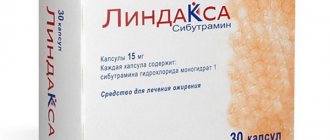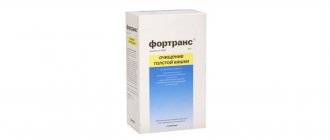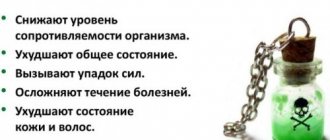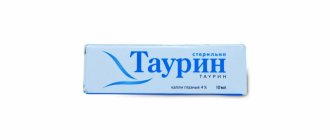Buy Caffeine-sodium benzoate injection solution 20% 1ml No. 10 in pharmacies
Instructions for use Caffeine-sodium benzoate solution d/in. 20% 1ml No. 10
Dosage forms injection solution 20% 1 ml Group Psychomotor stimulants - purine and imidazole derivatives International nonproprietary name Caffeine Composition Caffeine. Manufacturers : Belmedpreparaty (Belarus), Biokhimik OJSC (Russia), Borisov Medical Preparations Plant (Belarus), Dalkhimfarm (Russia), Darnitsa Pharmaceutical Company (Ukraine), Moscow Endocrine Plant (Russia), Moskhimfarmpreparaty im. ON THE. Semashko (Russia), Chelyabinsk Chemical Pharmaceutical Plant (Russia) Pharmacological action Analeptic, psychostimulating, cardiotonic. It has a stimulating effect on the central nervous system, increases reflex excitability of the spinal cord, stimulates the respiratory and vasomotor centers, regulates and enhances excitation processes in the cerebral cortex. Increases mental and physical performance, reduces fatigue and drowsiness. Increases the strength and frequency of heart contractions (especially in large doses), increases blood pressure during hypotension (does not change normal). Dilates the blood vessels of skeletal muscles, heart, kidneys, bronchi, narrows the abdominal organs. Increases the secretory activity of the stomach. Reduces platelet aggregation. Has a moderate diuretic effect. Blocks central and peripheral adenosine receptors. Stabilizes transmission at dopaminergic synapses, beta-adrenergic synapses of the hypothalamus and medulla oblongata, cholinergic synapses of the cortex and medulla oblongata, noradrenergic synapses. The effect of caffeine largely depends on the type of nervous system in the patient, so dosing of caffeine should take into account the individual characteristics of nervous activity. Side effects: Anxiety, agitation, insomnia, tachycardia, arrhythmias, increased blood pressure, nausea, vomiting. With long-term use, slight addiction is possible (a decrease in the effect of caffeine is associated with the formation of new adenosine receptors in brain cells). Sudden cessation of caffeine administration may lead to increased central nervous system inhibition with symptoms of fatigue, drowsiness and depression. Indications for use Diseases accompanied by depression of the functions of the central nervous system, cardiovascular system, respiratory system (drug poisoning, infectious diseases, etc.). For cerebral vascular spasms, to increase mental and physical performance, to eliminate drowsiness, breathing problems, enuresis in children. Contraindications Severe arterial hypertension, organic diseases of the cardiovascular system (including atherosclerosis), increased excitability, glaucoma, sleep disorders, old age. Method of administration and dosage: Adults, 1 ml of 10% or 20% solution subcutaneously. Higher doses for adults under the skin: single dose 0.4 g, daily dose 1 g. Children: 0.25 - 1 ml of a 10% solution subcutaneously, depending on age. Doses must be selected individually. Overdose If abused, caffeine (more than 300 mg per day, i.e. four cups of natural coffee, 150 ml each) can cause anxiety, restlessness, tremors, headache, confusion, and cardiac extrasystoles. In newborns (including premature infants), at a blood plasma concentration of 50 mg/ml, toxic effects are possible: anxiety, tachypnea, tachycardia, tremor, increased Moro reflex, and at higher concentrations - convulsions. Interaction Reduces the effect of sleeping pills and narcotics, increases (improving bioavailability) - acetylsalicylic acid, paracetamol and other non-narcotic analgesics. Improves the absorption of ergotamine in the gastrointestinal tract. Special instructions No data available. Storage conditions List B. In a place protected from light, at room temperature.
Caffeine-sodium benzoate tablets 200 mg No. 10x1
Name
Sodium caffeine benzoate tablet 200 mg in blister pack No. 10x1
Description
The tablets are round, white, with a flat surface with beveled edges and a score line. The mark is intended to divide the tablet into equal half doses.
Compound
caffeine sodium benzoate; 1 tablet contains caffeine-sodium benzoate 200 mg; excipients: lactose monohydrate, microcrystalline cellulose, starch, corn, povidone, calcium stearate.
Pharmacotherapeutic group
Psychostimulants and nootropics. Xanthine derivatives. ATS code MO6VS01.
Indications for use
For short-term relief of fatigue.
Contraindications
Hypersensitivity to caffeine, other xanthine derivatives (theophylline, theobromine) or to any of the components of the drug; increased excitability; sleep disorders; arterial hypertension; organic diseases of the cardiovascular system (including acute myocardial infarction, paroxysmal tachycardia, atherosclerosis); glaucoma; elderly age.
Precautionary measures
When using the drug, you should avoid excessive consumption of coffee, strong tea, other tonic drinks, alcohol and medications containing caffeine. In case of prolonged use of the drug, the development of mental dependence is possible. Abrupt cessation of treatment leads to increased inhibition of the central nervous system (drowsiness, depression). The effect of the drug largely depends on the type of nervous system and can manifest itself as both excitation and inhibition of higher nervous activity. Caffeine can cause a false increase in uric acid in the blood, determined by the Bittner method. Caffeine may increase urinary levels of 5-hydroxyindoleacetic acid (5-HIAA), vanillylmandelic acid (VMA), and catecholamines, which may lead to false-positive diagnoses of pheochromocytoma and neuroblastoma. The drug should be used with caution in patients with a history of peptic ulcer of the digestive tract. Patients with arrhythmias such as sinus tachycardia/extrasystole (risk of increased arrhythmia), patients with liver cirrhosis (risk of overdose due to impaired caffeine degradation), patients with hypothyroidism (risk of increased side effects of caffeine), patients with anxiety disorders (risk of aggravation) should take only minimal doses of caffeine (approximately 100 mg) or only as directed by a doctor. The drug contains lactose. Patients with rare hereditary forms of galactose intolerance, lactase deficiency or glucose-galactose malabsorption syndrome should not use this drug.
Use during pregnancy or breastfeeding
The drug is contraindicated for use during pregnancy or breastfeeding.
The ability to influence the reaction rate when driving a vehicle or working with other mechanisms
Until the patient's individual reaction to the drug is clarified, you should refrain from driving vehicles or operating other mechanisms, given that side effects from the central nervous system may occur during treatment.
Children
Sodium caffeine benzoate in tablet form is not recommended for use in children under 12 years of age.
Interaction with other drugs
Concomitant use of caffeine sodium benzoate with:
- MAO inhibitors, furazolidone, procarbazine and selegiline can cause the development of dangerous cardiac arrhythmias or a marked increase in blood pressure;
- barbiturates, primidone, anticonvulsants (hydantoin derivatives, especially phenytoin) - increased metabolism and increased clearance of caffeine;
- ketoconazole, disulfiram, ciprofloxacin, norfloxacin, enoxacin, pipemidic acid can cause a slowdown in the excretion of caffeine and an increase in its concentration in the blood;
- cimetidine, hormonal contraceptives, isoniazid - increased effect of caffeine;
- fluvoxamine - increasing the level of caffeine in the blood plasma;
- mexiletine - reduction of caffeine excretion by 50%;
- nicotine - increasing the rate of caffeine elimination;
- methoxalen - reducing the excretion of caffeine from the body with a possible increase in its effect and the development of toxic effects;
- clozapine - increased concentration of clozapine in the blood; gig
- theophylline and other xanthines - decreased clearance of these drugs, increased risk of additive pharmacodynamic and toxic effects;
- beta-blockers can lead to mutual suppression of therapeutic effects;
- thyroid-stimulating drugs - increase the thyroid effect.
- opioid analgesics, anxiolytics, hypnotics and sedatives - a decrease in the effect of these drugs;
- lithium preparations - increased excretion of lithium in urine;
- calcium preparations - decreased absorption of these drugs;
- cardiac glycosides - accelerated absorption, enhanced action and increased toxicity of cardiac glycosides;
- analgesics-antipyretics - enhancing their effect;
- ergotamine - improves the absorption of ergotamine in the digestive tract;
- derivatives of xanthines, ?- and ? - adrenomimetics, psychostimulants - potentiation of their effects.
Caffeine is an antagonist of anesthetics and other drugs that depress the central nervous system, a competitive antagonist of adenosine and ATP drugs. Drinks and medications containing caffeine, when used together with the drug, may cause excessive stimulation of the central nervous system. Concomitant use with caffeine-containing medications and drinks is not recommended.
Directions for use and dosage
Unless otherwise prescribed, 1/2 tablet (100 mg) or, if necessary, 1 tablet (200 mg) is recommended to be taken orally once a day, swallowed whole, without chewing, with a small amount of water. The mark on the tablet is intended to divide the tablet into equal half doses. If necessary, it is permissible to repeat caffeine intake at the indicated dosage, but no more than 2 times within 24 hours. Caffeine sodium benzoate tablets are recommended to be taken in the morning to avoid possible sleep disturbances. Special categories of patients Patients with impaired liver and kidney function. A dose reduction is recommended. Patients over 65 years of age. Use is not recommended.
Children
. Do not use in children under 12 years of age.
Overdose
Symptoms: gastralgia, agitation, anxiety, agitation, restlessness, confusion, delirium, dehydration, tachycardia, arrhythmias, hyperthermia, increased frequency of urination, headache, increased tactile or pain sensitivity, tremor or muscle twitching; nausea and vomiting, sometimes mixed with blood; ringing in the ears, convulsive seizures (in case of acute overdose - tonic-clonic seizures). Treatment: gastric lavage, administration of enterosorbents, maintenance of pulmonary ventilation and oxygenation; for convulsive seizures - intravenous diazepam, phenobarbital or phenytoin; maintaining fluid and salt balance; hemodialysis. Supraventricular tachycardia is treated with intravenous propranolol. There is no specific antidote.
Side effect
Nervous system: agitation, anxiety, tremor, restlessness, headache, dizziness, muscle twitching, seizures, increased reflexes, tachypnea, insomnia; with sudden withdrawal - increased inhibition of the central nervous system with the appearance of feelings of increased fatigue, drowsiness, muscle tension, and depression. Cardiovascular system: feeling of tightness in the chest; palpitations, tachycardia, arrhythmias, increased blood pressure. Digestive tract: nausea, vomiting, diarrhea, exacerbation of peptic ulcer. Urinary system: increased frequency of urination, increased creatinine clearance, increased excretion of sodium and calcium. Allergic reactions: skin irritation, itching, urticaria, Quincke's edema, bronchospasm. Impact on the results of laboratory tests: possible false increase in uric acid in the blood, determined by the Bittner method, hypoglycemia/hyperglycemia, a slight increase in 5-hydroxyindoleacetic acid (5-HIAA), vanillylmandelic acid (VMA) and catecholamines in the urine. Other: nasal congestion, with long-term use - a decrease in the effect of caffeine, which is associated with the formation of new adenosine receptors in brain cells, drug dependence. If the described adverse effects occur or other unusual reactions not mentioned in the package insert occur, you should stop taking the drug and consult your doctor about its further use.
Best before date
4 years. The drug should not be used after the expiration date indicated on the package.
Storage conditions
Store in original packaging to protect from moisture and light at a temperature not exceeding 25 °C. Keep out of the reach of children.
Package
10 tablets in a blister made of polyvinyl chloride film and aluminum foil, coated on one side with thermovarnish and printed on the other side. 1 blister along with instructions for medical use or an insert in a cardboard pack.
Vacation conditions
On prescription.
Caffeine-sodium benzoate solution for subcutaneous administration 20% 1 ml ampoule 10 pcs. in Novokuznetsk
Latin name
Coffein-benzoate sodium solution for injections
International nonproprietary name
caffeine
Release form
Solution for subcutaneous administration
Package
1 ml - ampoules (10) - cardboard packs. 1 ml - ampoules (10) - cardboard packs with a cardboard insert for fixing the ampoules.
Description
Transparent or opalescent, colorless or slightly colored liquid.
pharmachologic effect
Has a stimulating effect on the central nervous system, enhances and regulates excitation processes in the cerebral cortex; in appropriate doses, it enhances positive conditioned reflexes and increases motor activity. The stimulating effect leads to increased mental and physical performance, reduced fatigue and drowsiness. Large doses can lead to depletion of nerve cells. The effect of sleeping pills and narcotics is weakened, increases the reflex excitability of the spinal cord, and stimulates the respiratory and vasomotor centers. Cardiac activity under the influence of caffeine-sodium benzoate increases, myocardial contractions become more intense and more frequent. In collaptoid and shock conditions, blood pressure increases under the influence of caffeine-sodium benzoate; with normal blood pressure, no significant changes are observed, since simultaneously with the excitation of the vasomotor center and the heart, under the influence of caffeine-sodium benzoate, the blood vessels of skeletal muscles and other areas of the body (heart) dilate , kidneys), however, the vessels of the abdominal organs (except the kidneys) narrow. Diuresis under the influence of caffeine-sodium benzoate increases slightly, mainly due to a decrease in the reabsorption of electrolytes in the renal tubules. Brain vessels narrow under the influence of caffeine-sodium benzoate, especially when they dilate. Caffeine sodium benzoate reduces platelet aggregation.
Indications
Diseases accompanied by depression of the central nervous system, functions of the cardiovascular and respiratory systems (including poisoning with opioid analgesics, infectious diseases), cerebral vascular spasms, decreased mental and physical performance, drowsiness.
Directions for use and doses
Administered subcutaneously or taken orally. Adults - 100-200 mg 2-3 times a day; children - 25-100 mg 2-3 times a day.
Compound
1 ml. contains: caffeine sodium benzoate 200 mg; excipients: sodium hydroxide, water for injection.
Contraindications
Arterial hypertension, organic diseases of the cardiovascular system (including severe atherosclerosis), glaucoma, increased excitability, sleep disorders, old age.
Use during pregnancy and breastfeeding
Since there have been no adequate and well-controlled studies in women during pregnancy, and given the slow elimination of caffeine from the fetus, its use during pregnancy is possible only after assessing the benefit/risk ratio for the mother and fetus. Caffeine and its metabolites are excreted into mother's milk in small quantities. If it is necessary to use it during lactation, the benefit/risk ratio for the mother and child should be assessed. Use in neonatology.
special instructions
Caffeine can be used during the neonatal period, as well as in premature infants. In this case, the concentration of caffeine in plasma should be monitored and maintained within therapeutic limits (3-10 mcg/ml). Use in persons with a history of gastric and duodenal ulcers. Caution is required when prescribing caffeine to these groups of patients, due to the increased risk of exacerbation of peptic ulcer disease in them. Impact on the ability to perform work that requires concentration. When taken orally in high doses, caffeine makes it difficult to concentrate and increases the number of operator errors when performing work that requires concentration.
Side effects
From the side of the central nervous system: sleep disturbance, agitation, anxiety; With prolonged use, addiction is possible. From the cardiovascular system: tachycardia, increased blood pressure, arrhythmias. From the digestive system: nausea, vomiting.
Drug interactions
When used simultaneously, the effect of sleeping pills and anesthetics is reduced. With simultaneous use, it is possible to enhance the effect of analgesics-antipyretics, salicylamide, naproxen. With the simultaneous use of estrogens (hormonal contraceptives, drugs for HRT), it is possible to increase the intensity and duration of action of caffeine due to inhibition of the CYP1A2 isoenzyme by estrogens. When administered concomitantly with adenosine, caffeine reduces the increased heart rate and blood pressure changes caused by adenosine infusion; reduces vasodilation caused by the action of adenosine. With simultaneous use, it is possible to increase the bioavailability, absorption rate and plasma concentration of acetylsalicylic acid. With simultaneous use, mexiletine reduces the clearance of caffeine and increases its plasma concentrations, apparently due to mexiletine inhibition of caffeine metabolism in the liver. Methoxsalen reduces the excretion of caffeine from the body with a possible increase in its effect and the development of toxic effects. Due to the induction of microsomal liver enzymes under the influence of phenytoin, its simultaneous use accelerates the metabolism and excretion of caffeine. Fluconazole and terbinafine cause a moderate increase in the concentration of caffeine in the blood plasma, ketoconazole - less pronounced. The most pronounced increase in AUC and decrease in clearance are observed with simultaneous use of caffeine with enoxacin, ciprofloxacin, pipemidic acid; less pronounced changes - with pefloxacin, norfloxacin, fleroxacin. When used simultaneously, caffeine accelerates the absorption of ergotamine.
Storage conditions
Store at a temperature not exceeding 25C, in a place protected from light.










